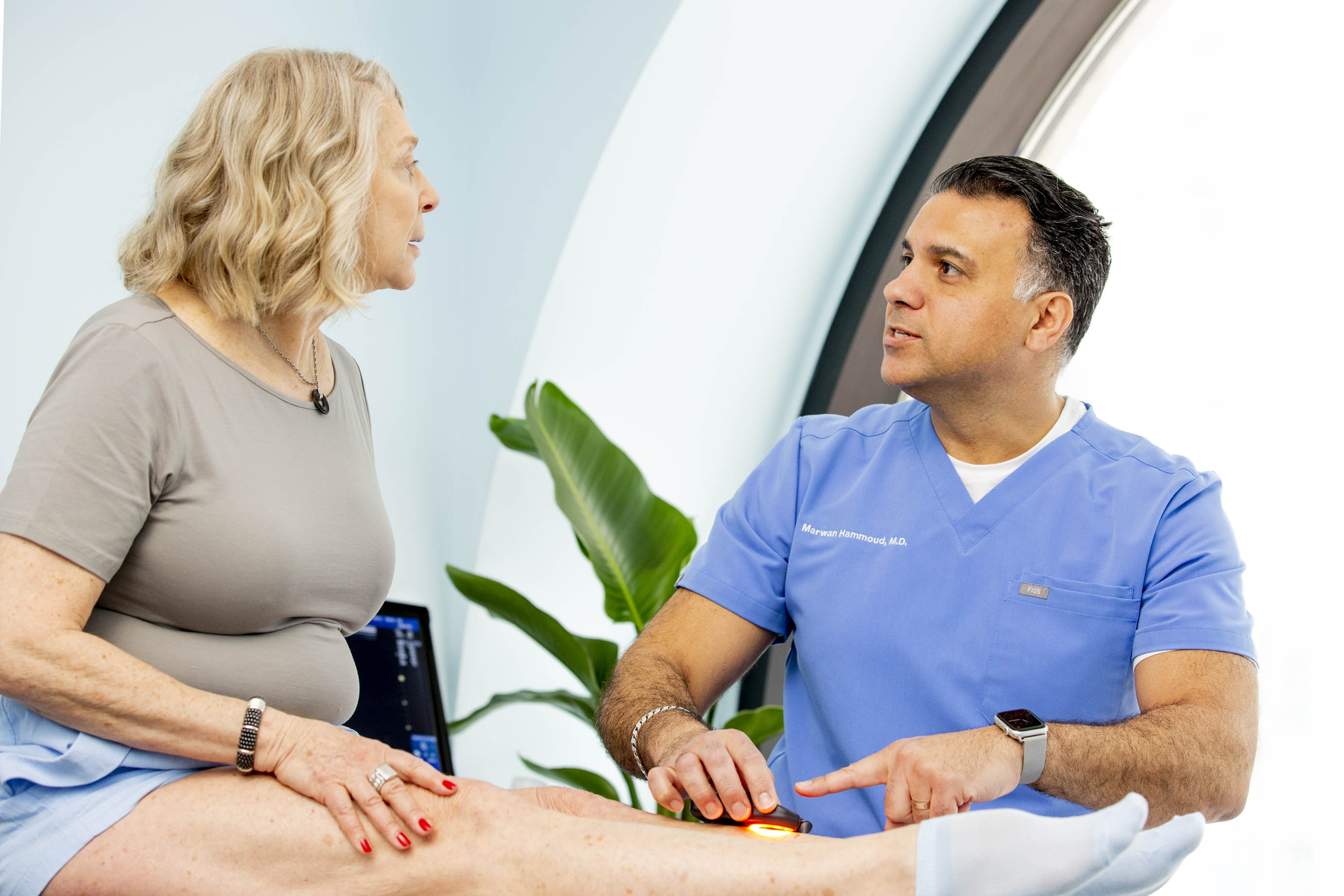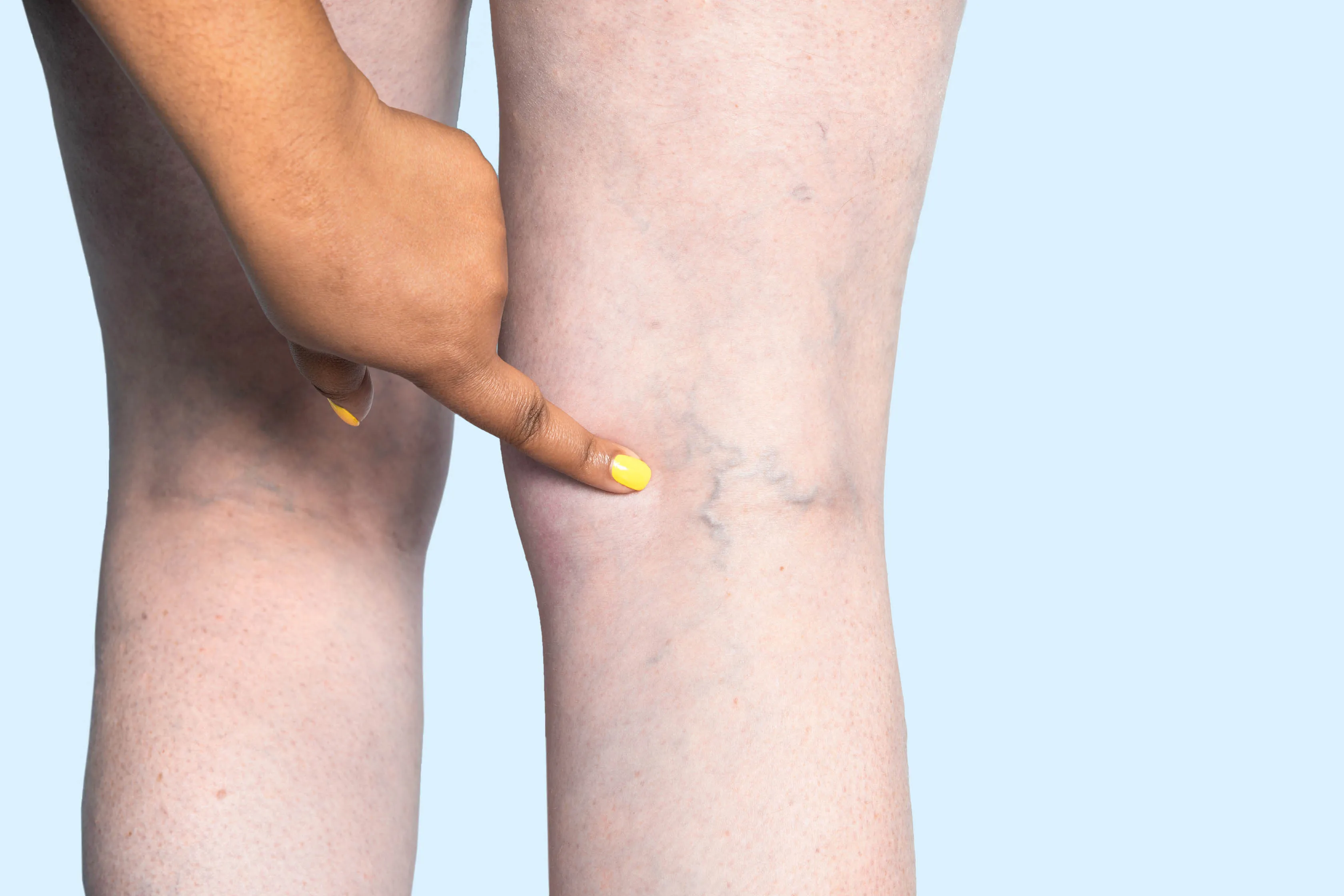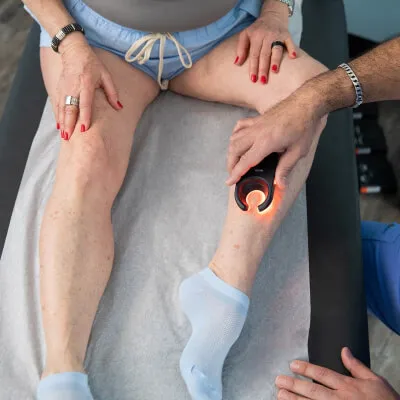Curious about chronic venous insufficiency? Seeing as this vein disease affects one in three adults in the USA, you should be!
Chronic venous insufficiency, or CVI, is a condition that occurs when your veins can't efficiently pump blood back to your heart. This can lead to poor circulation in the legs and cause a variety of unpleasant symptoms (like bulging veins and intense pain) if left untreated.
Causes and Risk Factors of CVI
CVI occurs when the blood pressure in the veins of your legs gets too high (a condition also known as venous hypertension). The extra pressure on these veins can make it hard for your body to properly circulate blood back to the heart, causing blood to flow backward through the valves. This, in turn, can lead to valvular incompetence, a condition where the valves in your leg veins don't work properly, causing blood to pool in your veins.

Though CVI can be caused by many factors, some of the major ones to look out for include:
- Obesity
- Genetics
- Pregnancy
- Lack of exercise
- Poor diet
- Age
- Sedentary lifestyle
The thing about CVI is, it's not just uncomfortable; it's bad for your overall health. When veins expand and blood can't get back to your heart, a lot of unpleasant symptoms can pop up. So, how do you know if you're suffering from CVI? Read on to find out.
Signs and Symptoms of CVI

Physical Symptoms:
- Cramping
- Achiness
- Itching/Burning
- Tiredness/Fatigue
- Heavy discomfort
- Pain
- Restlessness
Visual Symptoms:
- Varicose veins
- Spider veins
- Skin discoloration
- Skin ulcers

Stages of Chronic Venous Insufficiency
There are six distinct stages of CVI, all characterized by different symptoms. Understanding which stage you are at can help your vein doctor figure out the best treatment plan for you.

1. Spider Veins
Also known as telangiectasia, these are the colorful, web-like veins that appear close to the skin's surface.
2. Varicose Veins
These are the swollen, twisted veins just under the skin's surface. (Heads up: they can also be a sign of superficial vein thrombosis, so make sure to talk to your doctor if you notice varicose veins.)
3. Leg Swelling
Swelling (also known as edema) happens when fluid gets trapped in the body's tissues.
4. Skin Changes
Skin texture and color changes occur at this stage of CVI and are often due to venous eczema and lipodermatosclerosis.
5. Healed Ulcers
These white scars are also known as atrophie blanche.
6. Open Ulcers
Also known as venous stasis ulcers, these open sores can appear on the legs as a result of CVI.
Complications of Untreated CVI
If it isn't clear yet, CVI is a serious condition that shouldn't be ignored.
Untreated CVI can lead to a variety of serious, and even life-threatening complications, including:
- Open sores that can become infected
- Blood clots
- Post-thrombotic (postphlebitic) syndrome (a condition that can occur after DVT)
- And even pulmonary embolism
If you suspect you have CVI, it's important to talk to a doctor right away so that you can get the treatment you need. In the meantime, here are a few changes you can make at home.
Diagnosing Vein Problems
When you come to Metro Vein Centers with leg issues, we do everything we can to understand what's going on with your legs and put together a treatment plan. Typically, your vein consultation includes:
- A thorough physical exam of your legs
- A discussion about your health, family history, and habits
- An ultrasound examination
- A conversation about treatment options
Vein Treatments for CVI

We'll keep it short, but essentially, treatment options include:
- Sclerotherapy: a non-surgical, injectable chemical treatment.
- Endovenous Thermal Ablation: a treatment that uses heat and includes Endovenous Laser Ablation and Radiofrequency Ablation.
- Varithena: a non-surgical, injectable foam treatment for varicose veins.
- Ambulatory phlebectomy, or microphlebectomy: a treatment that removes varicose veins through a series of small incisions.
But don't just take our word for it...
See how Metro Vein Centers has helped real people just like you.
"Metro Vein Centers... has been a life-saver for me after years of issues with my legs. The staff is very professional and kind to their patients. It was very efficient with quick service."
Patricia
"My experience at Metro Vein Centers was fast, easy, and convenient with no downtime at all. Love the staff, they treat you like they've known you for years."
Sasha
"Best decision I've ever made. Staff was very knowledgeable and friendly. My procedure was virtually painless. I want to thank the doctor and his staff for relieving my leg pain."
Raymond
Ask the Doctor:
See what our doctors have to say about the latest CVI treatments:
"Sclerotherapy is a game-changer in vein treatment, offering a minimally invasive solution that effectively addresses both the cosmetic and health concerns associated with varicose and spider veins. In my experience as a vascular specialist, I've seen this procedure consistently deliver impressive results, significantly improving patients' comfort and confidence with minimal downtime." - Dr. Philip LoPresti, Chief Medical Officer
Prevention and Lifestyle Changes
While there's no way to prevent CVI, there are some at-home remedies that can temporarily help alleviate symptoms. Consider making the following lifestyle changes:
- Exercise
- Wear graduated compression stockings
- Eat a balanced diet
- Drink plenty of water
- Maintain a healthy weight
- Elevate your legs
While not long-term solutions, these remedies may help you feel better.
When to Seek Medical Attention
If you experience new or worsening symptoms you should talk to a vein doctor. While articles like this can be helpful in understanding what condition you might be dealing with, only a doctor can diagnose your condition and create a treatment plan. If you've experienced any of one of the six stages of CVI, it's time to book a consultation.
Long-term Outlook and Prognosis
Because vein disease and CVI is a progressive disease, it won't go away over time. As a matter of fact, symptoms will only worsen as you age. Fortunately, CVI treatments are incredibly successful, with very little pain and little-to-no down time following your treatment.
Schedule your initial evaluation today, and our vein specialists will work with you to get you looking and feeling better right away. Believe us, it's worth it.
FAQ
How is CVI different from acute venous problems?
While CVI is a chronic, progressive condition that develops gradually over a span of time, acute venous problems occur suddenly.
Can CVI lead to blood clots?
Yes, it can! When blood pools in the veins like it does with CVI, it is more likely to form clots.
What's the connection between varicose veins and CVI?
Varicose veins are a visible symptom of CVI! When blood pools in the veins, it can create those twisty, bulging veins we're all too familiar with.
How does obesity contribute to the development of CVI?
Obesity can put increased pressure on the veins in your legs, causing them to eventually weaken and stop working properly.
Are there any occupations that increase the risk of developing CVI?
Yes! Jobs that require standing or sitting for extended periods of time put you at a greater risk of developing CVI. This includes teaching, nursing, hairdressing, and similar roles.
Can CVI be completely cured?
No, CVI can't be cured, but there are treatments that can improve your symptoms.
How does pregnancy affect the progression of CVI?
Pregnancy can worsen the progression of CVI due to a variety of different reasons. Thankfully, symptoms often improve after the baby is born, though they might not entirely resolve.
What role do compression stockings play in managing CVI?
Compression socks can improve blood circulation by applying gentle pressure to legs, reducing venous pressure and swelling.

Dr. Philip LoPresti
Meet Dr. Philip LoPresti DO, DABVLM, FACS, a board-certified vein specialist and surgeon with over 20 years of experience. Schedule an appointment with him in Queens, NY today.
Meet Dr. Philip LoPresti
Trusted insight from the nationally accredited, board-certified vein doctors at Metro Vein Centers.






